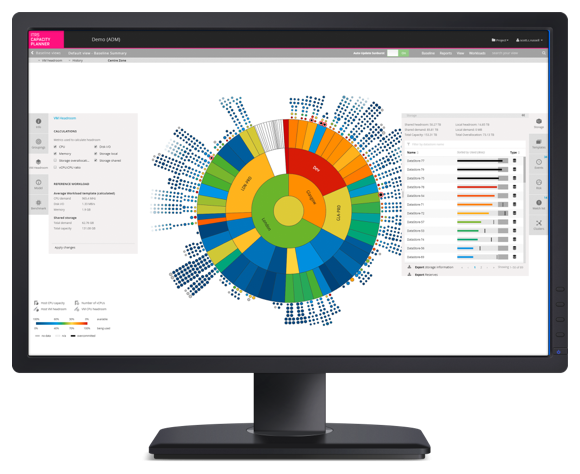Manage and optimise your IT estate through digital transformation
Full stack monitoring across hybrid dynamic environments
Dynamic environments are becoming the choice for most enterprises because they allow operating at scale without sacrificing application uptime.
There are many options out there to run your applications dynamically, from on-demand and elastic server availability in cloud environments, to containers, microservices and orchestrators like Kubernetes and OpenShift. These orchestrated environments can be set up on-prem, hybrid cloud or multi-cloud environments using Azure, AWS and Google Cloud Platform.
Orchestrated Environments
Our solutions integrate seamlessly with all major cloud platforms, as you navigate through digital complexity
Monitoring and more: manage your workloads and optimise your cloud costs

Challenges brought by cloud adoption
Managing a hybrid IT environment with many different tools and no single source of truth.
Growing costs with little visibility into the reasons for increased costs.
Organisations applying pressure to move to the cloud, but technical teams needs to demonstrate how and when to move and if it really is the most cost effective approach.
On-premise applications are expected to move to the cloud but a "like for like migration" is likely going to lead to increased costs.
Unable to forecast costs based on increased demand and likely cloud utilisation.

The ITRS solution
- Single pane of glass across hybrid IT.
- Right-sizing and right-buying for migrations to multi-cloud, as well as per application.
- Consistent measuring and reporting of costs and opportunities regardless of the platform.
- Detailed understanding of demand and opportunities to reduce idle time to save costs.
- Detailed analytics on application resource profile to determine optimum cloud configuration and savings opportunities.
- Correlation of volumes with cloud resources to determine how cloud service usage and cost will increase as demand increases.
- Visibility into the "transactional" cost of using the cloud by determining the cross-service cost servicing demand.
